Why Are Waveguide Transitions Essential for Seamless Microwave System Integration?
In the complex landscape of modern microwave systems, engineers face mounting challenges in achieving seamless integration between different components and frequency bands. The answer to maintaining signal integrity while bridging diverse microwave components lies in the strategic implementation of Waveguide Transition technology. These sophisticated devices serve as critical connectors that enable smooth electromagnetic energy transfer between different waveguide sizes, types, and orientations without compromising system performance. As microwave applications continue to evolve across satellite communications, radar systems, and telecommunications infrastructure, the role of waveguide transitions becomes increasingly vital for ensuring optimal signal transmission, minimizing reflection losses, and maintaining system reliability across demanding operational environments.
Critical Functions of Waveguide Transitions in Modern Microwave Architecture
Impedance Matching and Signal Integrity Preservation
The fundamental purpose of any Waveguide Transition extends far beyond simple mechanical connection - it serves as the electromagnetic bridge that ensures optimal impedance matching between disparate waveguide components. When microwave energy travels through transmission lines, any impedance mismatch creates unwanted reflections that degrade signal quality and reduce overall system efficiency. Advanced waveguide transitions employ sophisticated geometric designs and precision manufacturing techniques to create smooth impedance transformations that minimize voltage standing wave ratio (VSWR) across wide frequency ranges. The water-cooled twist waveguide produced by Advanced Microwave Technologies exemplifies this principle, incorporating precision-engineered transitions that maintain consistent 50-ohm impedance while providing the flexibility to redirect signal paths through customizable twist angles. These transitions utilize carefully calculated taper geometries and stepped configurations that gradually transform the electromagnetic field distribution, ensuring that minimal energy is reflected back toward the source. The integration of cooling systems within these transitions addresses the critical thermal management requirements of high-power applications, where excessive heat buildup can alter the electrical properties of the waveguide material and compromise impedance matching performance.
Mechanical Flexibility and System Integration Solutions
Modern microwave systems demand unprecedented flexibility in routing and positioning, particularly in space-constrained environments where traditional rigid waveguide installations prove inadequate. Waveguide Transition components address these challenges by providing mechanical adaptability while maintaining electrical performance standards essential for reliable operation. The twist waveguide technology developed by Advanced Microwave Technologies demonstrates how mechanical flexibility can be achieved without sacrificing electromagnetic integrity, offering customizable twist angles ranging from 45° to 90° degrees to accommodate complex installation requirements. These flexible transitions incorporate specialized joint designs and rotational mechanisms that allow for precise angular adjustments during installation and maintenance procedures. The copper alloy construction provides excellent electrical conductivity while offering sufficient mechanical strength to withstand the physical stresses associated with vibration, thermal expansion, and handling during system assembly. Furthermore, the integration of standardized flange interfaces, including CPR and UBR configurations, ensures compatibility with existing waveguide infrastructure while providing secure mechanical connections that maintain consistent electrical contact under varying environmental conditions.
Thermal Management in High-Power Applications
The operation of Waveguide Transition components in high-power microwave systems presents unique thermal challenges that directly impact system reliability and performance longevity. As power levels increase, the resistive losses within waveguide materials generate substantial heat that must be effectively dissipated to prevent performance degradation and potential component failure. Advanced Microwave Technologies addresses these thermal management requirements through innovative water-cooled transition designs that integrate sophisticated cooling channels directly into the waveguide structure. The water-cooling system utilizes forced convection heat transfer principles, circulating coolant through strategically positioned channels that maximize thermal contact with heat-generating surfaces while minimizing disruption to the electromagnetic field distribution. This thermal management approach enables continuous operation at power levels that would otherwise cause traditional air-cooled transitions to exceed safe operating temperatures. The cooling system design incorporates corrosion-resistant materials and leak-proof connections that ensure long-term reliability in demanding operational environments, while the precise temperature control capabilities extend component lifespan and maintain consistent electrical performance characteristics throughout the operational duty cycle.
Performance Optimization Through Advanced Transition Design
Frequency Response and Bandwidth Considerations
The electrical performance of Waveguide Transition components across their intended frequency range represents a critical factor in determining overall system capability and reliability. Modern microwave applications increasingly demand broadband performance that spans multiple frequency bands, requiring transition designs that maintain consistent electrical characteristics across wide frequency ranges. Advanced Microwave Technologies addresses these requirements through precision engineering techniques that optimize the electromagnetic field transformation processes within transition structures. The company's waveguide transitions support frequencies up to 110 GHz, encompassing everything from traditional microwave bands through emerging millimeter-wave applications including 5G and future 6G communication systems. The broadband performance characteristics result from carefully optimized taper profiles and stepped impedance transformations that minimize frequency-dependent reflections and insertion losses. These designs incorporate advanced electromagnetic modeling techniques that predict and optimize field distribution patterns, ensuring that the transition maintains low VSWR and insertion loss across the entire operational bandwidth. The precision manufacturing processes employed in producing these transitions ensure that dimensional tolerances remain within specifications that preserve the designed electrical performance characteristics, even under the thermal cycling and mechanical stresses encountered in operational environments.
Material Selection and Environmental Durability
The selection of appropriate materials for Waveguide Transition construction plays a crucial role in determining both electrical performance and long-term reliability under diverse environmental conditions. Advanced waveguide transitions require materials that offer excellent electrical conductivity, mechanical strength, and resistance to environmental degradation factors including corrosion, thermal cycling, and mechanical stress. Advanced Microwave Technologies utilizes copper alloys that provide superior electrical conductivity while offering enhanced mechanical properties compared to pure copper alternatives. These alloy formulations maintain stable electrical characteristics across wide temperature ranges while providing sufficient strength to withstand the mechanical stresses associated with installation and operational vibration. The material selection process considers factors including coefficient of thermal expansion, corrosion resistance, and manufacturing compatibility to ensure that the finished transitions meet both performance and reliability requirements. Surface treatments and protective coatings are applied where necessary to enhance corrosion resistance and maintain consistent electrical contact at flange interfaces. The environmental compliance aspects, including RoHS compliance and ISO certification standards, ensure that these materials meet international environmental and quality standards while providing the performance characteristics required for demanding microwave applications.
Manufacturing Precision and Quality Control
The electrical performance of Waveguide Transition components depends critically on maintaining precise dimensional tolerances and surface finish characteristics that preserve the intended electromagnetic properties. Advanced manufacturing techniques employed by Advanced Microwave Technologies ensure that each transition component meets stringent specifications for dimensional accuracy, surface roughness, and material properties. The precision machining processes utilize computer-controlled equipment that maintains tolerances measured in thousandths of an inch, ensuring that critical dimensions affecting impedance matching and insertion loss remain within acceptable limits. Quality control procedures include comprehensive electrical testing using advanced network analyzers that verify performance characteristics across the entire operational frequency range. The 24-meter microwave darkroom facility provides the capability for precise far-field antenna measurements and electromagnetic characterization that validates transition performance under actual operating conditions. These testing procedures verify that VSWR, insertion loss, and isolation specifications are met before components are approved for delivery. The ISO 9001:2015 certification ensures that quality management systems maintain consistent manufacturing processes and documentation procedures that provide traceability and continuous improvement capabilities throughout the production cycle.
Applications and Implementation Strategies
Satellite Communication System Integration
The demanding requirements of satellite communication systems make Waveguide Transition components essential for achieving reliable uplink and downlink performance across multiple frequency bands. Satellite ground stations require precise signal routing between antennas, amplifiers, and processing equipment while maintaining signal integrity across frequency ranges spanning C-band through Ka-band and beyond. Advanced Microwave Technologies provides transition solutions that address the unique challenges associated with satellite communication applications, including the need for low-loss signal transmission, precise polarization control, and reliable operation under varying environmental conditions. The water-cooled twist waveguide technology proves particularly valuable in high-power satellite uplink applications where amplifier output power levels generate substantial heat that must be effectively managed to prevent performance degradation. These transitions enable flexible signal routing that accommodates the complex mechanical requirements of steerable antenna systems while maintaining the electrical performance necessary for reliable satellite communication links. The customizable twist angles allow engineers to optimize signal paths while minimizing the number of waveguide bends and joints that can introduce unwanted reflections and insertion losses.
Radar System Performance Enhancement
Modern radar systems depend on Waveguide Transition technology to achieve the precise electromagnetic performance required for accurate target detection and tracking across diverse operational scenarios. Defense and civilian radar applications require transition components that maintain consistent electrical characteristics while providing the mechanical flexibility necessary for complex antenna array configurations and rotational mechanisms. Advanced Microwave Technologies addresses these requirements through specialized transition designs that support the high-power, wide-bandwidth characteristics typical of advanced radar systems. The company's transitions support frequencies extending into millimeter-wave bands that enable high-resolution radar imaging and tracking capabilities essential for both defense and commercial applications. The thermal management capabilities provided by water-cooled transitions prove critical in radar applications where high average power levels and rapid duty cycles generate substantial heat loads that can compromise system performance if not properly managed. These transitions enable complex feed network configurations that support phased array antennas and multi-band radar systems while maintaining the phase accuracy and amplitude stability required for precise beamforming and target discrimination capabilities.
Telecommunications Infrastructure Applications
The evolution of telecommunications infrastructure toward higher frequencies and increased power levels creates significant opportunities for Waveguide Transition technology in supporting next-generation communication systems. Base station implementations for 5G and future 6G networks require transition solutions that can handle the increased power densities and frequency ranges associated with millimeter-wave communication systems. Advanced Microwave Technologies provides transition solutions that address the unique requirements of telecommunications infrastructure, including the need for compact designs that fit within space-constrained installations while maintaining the electrical performance necessary for reliable high-speed data transmission. The water-cooling capabilities prove particularly valuable in base station applications where high-power amplifiers and dense equipment installations create challenging thermal environments that require active cooling solutions. These transitions enable flexible routing of RF signals between antennas, amplifiers, and signal processing equipment while maintaining the phase accuracy and signal integrity required for advanced modulation schemes and beamforming technologies. The standardized flange interfaces ensure compatibility with existing infrastructure while providing the upgrade path necessary for implementing advanced communication technologies.
Conclusion
Waveguide Transition technology represents a critical enabling component for modern microwave system integration, providing the electromagnetic and mechanical interface solutions necessary for reliable high-performance operation. Through advanced materials, precision manufacturing, and innovative cooling solutions, these transitions ensure seamless integration while maintaining signal integrity across demanding applications. The combination of electrical performance, thermal management, and mechanical flexibility makes waveguide transitions indispensable for next-generation microwave systems.
Ready to optimize your microwave system integration with industry-leading waveguide transition solutions? Advanced Microwave Technologies Co., Ltd offers over 20 years of expertise in developing customized transition components that meet your specific requirements. Our comprehensive OEM services, rapid prototyping capabilities, and expert technical support ensure that your project receives the attention and precision it deserves. With our advanced 110 GHz testing capabilities, ISO certification, and proven track record across satellite communications, defense, and telecommunications applications, we're positioned to deliver the performance and reliability your systems demand. Don't let integration challenges compromise your project success – contact our technical team today at craig@admicrowave.com to discuss how our waveguide transition solutions can enhance your system performance and accelerate your development timeline.
References
1.Pozar, David M. "Microwave Engineering: Waveguide Transitions and Impedance Matching Networks." 4th Edition, John Wiley & Sons, 2012.
2.Collin, Robert E. "Foundations for Microwave Engineering: Waveguide Discontinuities and Transition Design." 2nd Edition, McGraw-Hill Education, 2001.
3.Ramo, Simon, John R. Whinnery, and Theodore Van Duzer. "Fields and Waves in Communication Electronics: Advanced Waveguide Transition Theory." 3rd Edition, John Wiley & Sons, 1994.
4.Matthaei, George L., Leo Young, and E.M.T. Jones. "Microwave Filters, Impedance-Matching Networks, and Coupling Structures: Waveguide Transition Applications." Artech House, 1980.
5.Rizzi, Peter A. "Microwave Engineering: Passive Circuits - Waveguide Transitions and Couplers." Prentice Hall, 1988.
6.Gupta, K.C., Ramesh Garg, Inder Bahl, and Prakash Bhartia. "Microstrip Lines and Slotlines: Transition Design and Implementation." 2nd Edition, Artech House, 1996.
YOU MAY LIKE
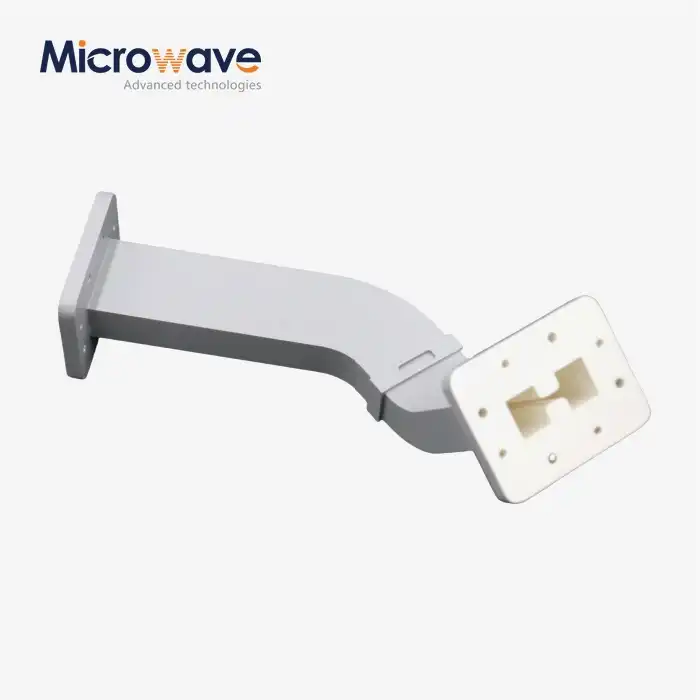 VIEW MOREDouble Ridge Waveguide Bend
VIEW MOREDouble Ridge Waveguide Bend VIEW MOREDouble Ridge Twist Waveguide
VIEW MOREDouble Ridge Twist Waveguide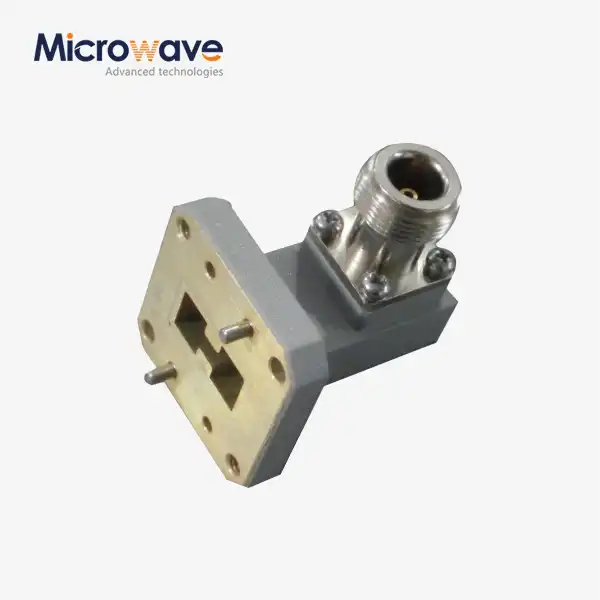 VIEW MOREDouble Ridged WG To Coaxial Adapter
VIEW MOREDouble Ridged WG To Coaxial Adapter VIEW MOREDouble-Ridged Waveguide Magic Tee
VIEW MOREDouble-Ridged Waveguide Magic Tee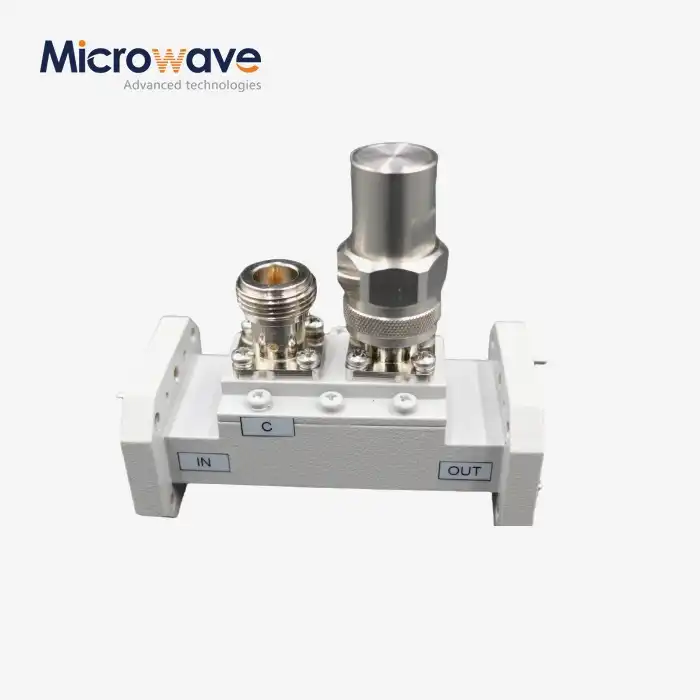 VIEW MOREDouble-Ridged Waveguide Loop Coupler
VIEW MOREDouble-Ridged Waveguide Loop Coupler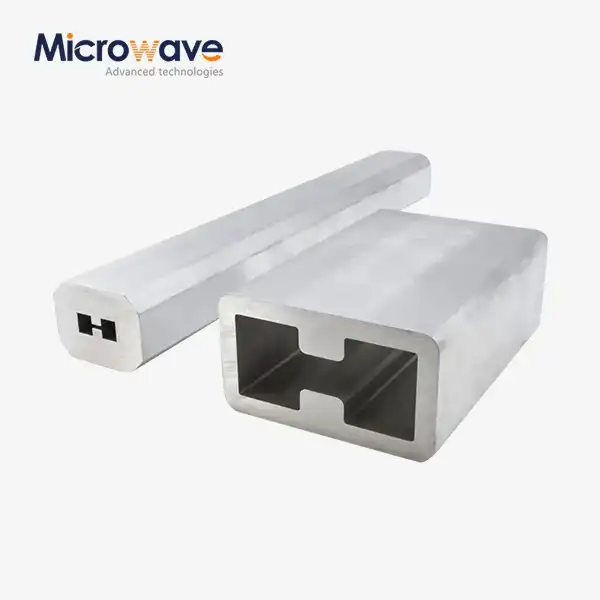 VIEW MOREDouble Ridge Waveguide Tube
VIEW MOREDouble Ridge Waveguide Tube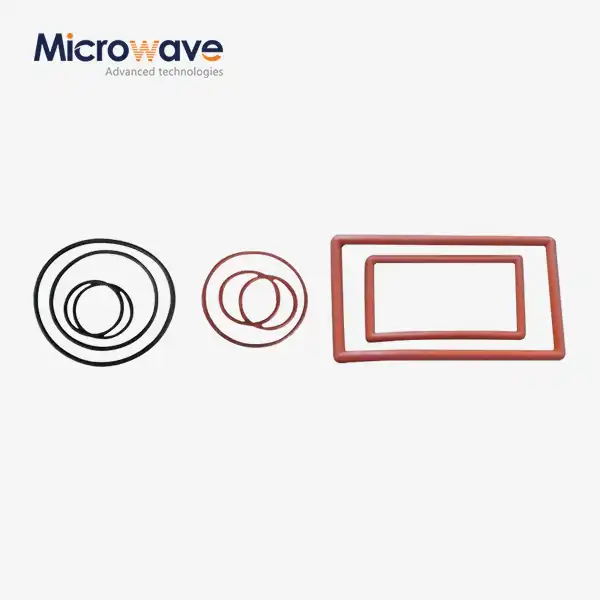 VIEW MOREWaveguide Flange Gasket
VIEW MOREWaveguide Flange Gasket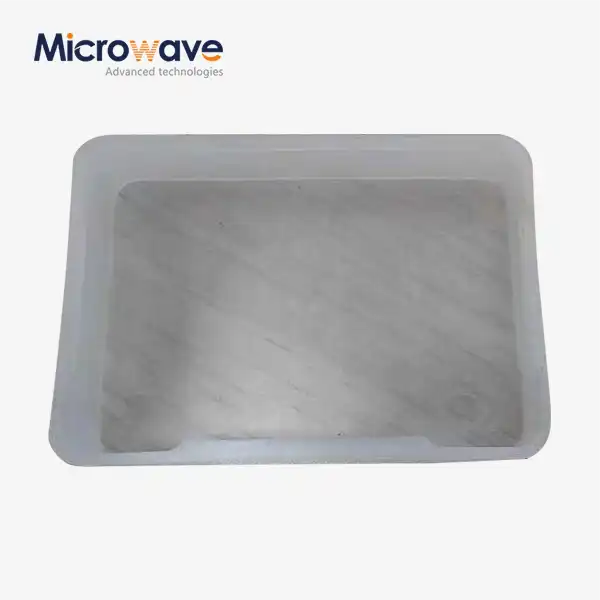 VIEW MOREPlastic Flange Caps
VIEW MOREPlastic Flange Caps




